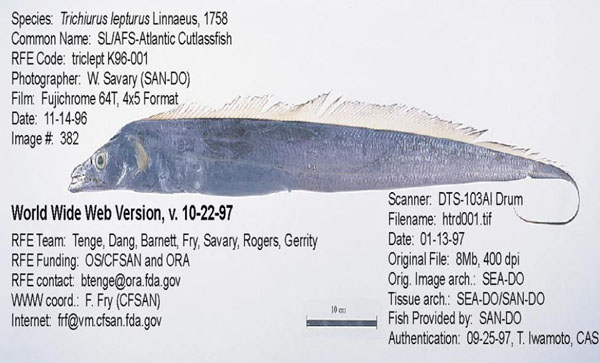The hairtail fish along the coast of my country can be divided into two categories: southern and northern. The northern hairtail fish are larger than the southern hairtail fish. They hibernate in the southern Yellow Sea, swim to the Bohai Sea in spring, forming a spring fish season, and return to the wintering grounds in groups in autumn to form an autumn fish season. The southern hairtail fish migrate north-south along the western edge of the East China Sea every year with different seasons, migrating northward for reproduction in spring and southward for wintering in winter. The East China Sea hairtail fish has spring and winter seasons. The spawning period of hairtail fish is very long, generally from April to June, followed by September to November. The number of eggs laid at a time is between 25,000 and 35,000. The suitable water temperature for spawning is 17℃ to 23℃.

Hairtail fish have a very diverse diet and are very greedy, sometimes eating their own kind. They have the habit of moving vertically day and night. Hairtail fish feed on more than 60 kinds of bait throughout the year, with fish and crustaceans as their main bait groups. The food composition of hairtail fish varies with the seasons. In spring, they mainly feed on cardinalfish, krill and hairtail fish; in summer, they mainly feed on hairtail fish, krill, mysid shrimp and porgy; in autumn, they mainly feed on larvae of stomatopods, seven-star bottom tetras and horse mackerel; in winter, they mainly feed on hairtail fish, seven-star bottom tetras, small hairtail fish and mysid shrimp.
When the hairtail is still, its head is upward and its body is vertical. It only relies on the waving of its dorsal and pectoral fins, and its eyes watch the movement above its head. If it finds prey, its dorsal fin will vibrate rapidly, and its body will bend to pounce on the food. Hairtails have the characteristic of lining up in groups. Every spring when the water temperature rises, hairtails swim in groups to the shore and migrate from south to north for reproduction. This is the fishing season. At the winter solstice, the water temperature drops, and the hairtails swim to the deep water to avoid the cold.

Population classification
Forktail deep-sea hairtail fish (Latin name: Benthodesmus enuis)
Poeyi's narrow-headed hairtail fish (Latin name: Evoxymetopon poeyi)
Striped narrow-headed hairtail fish (Latin name: Evoxymetopon taeniatus)
Sand hairtail fish (Latin name: Lepturacanthussavala)
Cutlassfish (Latin name: Tentoricepscristatus)
Cutlassfish (Latin name: Trichiurusbrevis)
Japanese cutlassfish (Latin name: Trichiurusjaponicus)